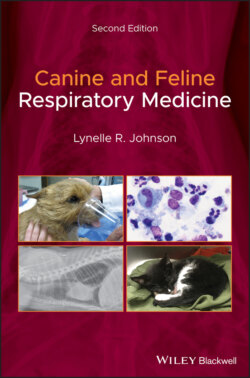Читать книгу Canine and Feline Respiratory Medicine - Lynelle Johnson R., Lynelle R. Johnson - Страница 28
Signalment
ОглавлениеSignalment can be an important clue to determining whether heart or lung disease is more likely in a given case. A young animal with a heart murmur and clinical signs of cardiopulmonary disease is a likely candidate for congenital heart disease. Young to middle‐aged cats can be affected by hypertrophic cardiomyopathy or feline bronchial disease. The presence of a gallop sound or arrhythmia makes cardiac disease more likely. It is more difficult to identify the primary cause of clinical signs in middle‐aged to older small breed dogs, because they can be affected by airway collapse, chronic bronchitis, and degenerative valvular disease concurrently. Exacerbation of any of these disease processes could be the cause for clinical presentation to the veterinarian.
Dobermans, Golden Retrievers, and giant breed dogs are commonly affected by cardiac disease, while primary respiratory conditions are less common in these dogs, with the exception of aspiration pneumonia associated with laryngeal paralysis, which is common in Retriever breeds. It is also important to recall that large breed dogs can be affected by airway collapse, chronic bronchitis, and pneumonia. Idiopathic pulmonary fibrosis is most commonly reported in older West Highland White terriers, but other terrier breeds can be affected as well as cats, and younger dogs can also occasionally develop interstitial lung disease. A Maine Coon or Ragdoll cat is more often affected by hypertrophic cardiomyopathy, while a Siamese cat would be more likely to develop chronic airway disease.
